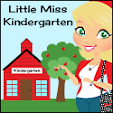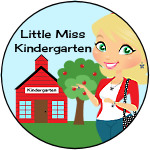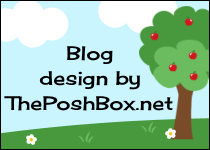Welcome Friends,
I am excited to be able to share with you my experiences with Playful Learning by Mariah Bruehl. I was intrigued this summer to step out of some of my comfort zones and try a few things. I decided to participate in the Playful Learning book study hosted by Teaching My 3. I did not know what I was really getting myself in for when I signed up. I had no prior knowledge about the book, the blog or the resources available from Playful Learning.
My book arrived and I was drawn in immediately by the cover because I signed up to feature the chapter on Art for this blog and I was so excited there was a chapter on Science for my Science blog. As soon as I got the book I started reading and I was hooked. Before I started this journey, I knew that the book focused on learning at home and I know what you might be thinking...yes, I teach in a school. But I thought it would be good for me to hear things from a different perspective and challenge my thinking a little and my main goal was to hopefully strengthen my home-school connection with the families that I serve.
In each chapter you will find resources for learning. Within each learning experience you will find information, ideas and resources that will facilitate positive experiences with your child or in my case...children. Within each of the seven subject areas there is a brief section that focuses on the developmental overview and the developmental process for children from ages 3-8. The focus of Playful Learning is to help identify where the child is within the continuum of learning and move the child forward through the learning experiences. The focus for Playful Learning is not skill based. For as long as I can remember I have been intrigued by human development especially in the early years of life. I have always been fascinated by observing developmental stages unfold. As an Early Childhood Educator, I am interested in the stages of development within the learning experiences. No matter the capacity that you are with children, this book has a lot to offer either the home or the school setting.

As part of this book study I was able to participate in the Playful Learning Theory + Practice miniCourse. This was my first experience taking an ecourse. The process of registration was simple. I am glad that I had the opportunity to read the book before the course because I really took a lot from the visuals in the presentation. At the time I did not realize that I could submit questions prior to the course. For my next course I will take full advantage of that. What a great way to interact and ask questions directly to the author who wrote the book. When the day arrived for the course, I was ready to watch and take notes, which I highly recommend. I did not realize that I would have the opportunity to view this information again after the ecourse but it is also an option. I think this is a wonderful addition to the course because after you let the information simmer, it is nice to go back and review it again and reflect on your thinking.
_Playful_Learning_Spaces_files/shapeimage_2.png)
Before we dive into any art learning experience it is important to discuss spaces and organization. The book addresses both. What you see above is an example of a small space dedicated for art materials. When I see art on a small space scale like that I instantly feel as though I can have that too!

And when I see materials stored and organized on a larger scale, I start thinking I can do that too! What I really connected to when reading and watching the ecourse was what Mariah refers to as the "invitation" to the learning experience. In my mind that translates to the visual that draws a child closer to explore and the action that the invitation elicits is the beginning of the learning experience. I was instantly interested in my first invitation to art. As I am planning for the coming school year, I have been really thinking about a dedicated art area. I thought I would possibly start by planning a small space. A small space seemed more manageable for me with all the other areas I was already planning in my head. What I like about a small space is that we all probably have a small space we can spare and considering the materials change over time, it seemed like the perfect place to start for me.
I was so excited to get started. I was out shopping at Target and found the dot caddy and I knew I wanted one for my "invitation" for art exploration. The dots reminded me of Kandinsky style circles and they looked like watercolors. For my first art exploration, I wanted to select a material that children could easily set up and clean up independently and I wanted it to be something other than crayons or markers. So I decided that watercolor exploration would set the stage for other explorations to follow... Stocking the caddy with enough supplies for several children to explore at one time was key. I also loved how the caddy provided a larger section that books and paper could be stored in. This caddy can be displayed right on top of cookie trays that can serve as a good work space. That is it. It is simple and small and a good place to start.
Please join me for more ideas and inspiration on Playful Learning. The next feature will focus on art small and large spaces and organization and then we will dive into the learning experiences.
Please note...photo credits belong to Playful Learning!






































1 comment:
Before I finished reading your post, I went straight to the playful learning website and then to amazon to add it to my kindle, but :( no kindle version! I am going to have to wait on snail mail. This sounds like a great book! My motto is "If I'm not having fun, they're not having fun!"
Post a Comment